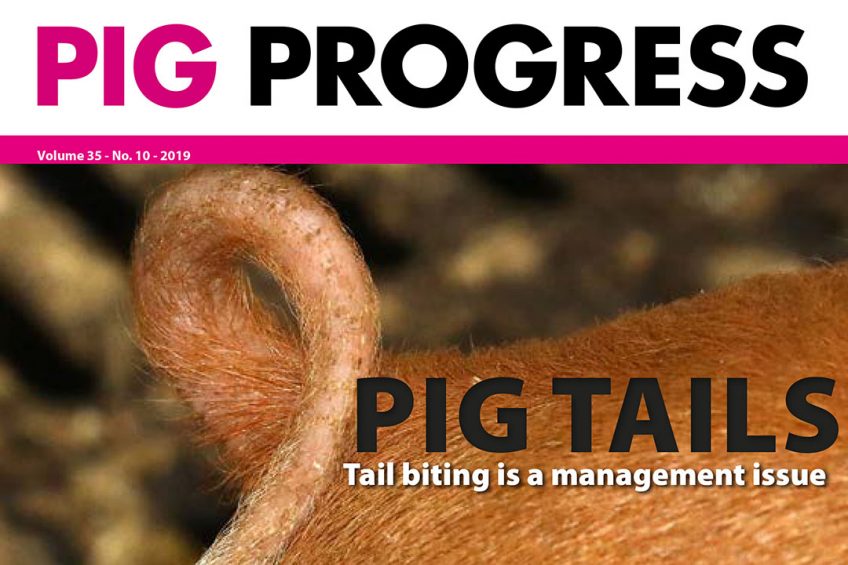Curly tails, happy pigs and gut health in Pig Progress 10

The latest edition of Pig Progress is now available online. Between the covers of this edition we look at ways to curb tail biting, a feed additive for happier pigs, and amino acids for gut health.
Sow milk yield and quality for a large litter
With the rapid development of pig herd performance over recent decades, it is not uncommon that upwards of 30 piglets are weaned per sow per year. Dr Klausing looks at feeding strategies and feed composition in light of this level of production on pages 6-8.
Tail biting can be nail biting for producers
Ideally, conventional pig producers must identify a tail-biting problem as early on as possible. In this article on pages 14-16 we understand what to look out for, and what to do about it.

Excellent feeding conditions to prevent tail biting
Continuing the subject of tail biting on pages 20-22, in Finland, where tail cutting was banned in 2003, pig producers have shown excellent results of reduced tail biting through optimal feeding conditions.

Dealing with depression in pigs
According to Russian scientists, the incidence of depression amongst pigs has seen an increase over recent decades. We look at a new feed additive on pages 12-13 that aims to help pigs to combat stress.

Agile amino acids for piglet gut health
Piglet gut health takes the limelight as producers are required to reduce the use of antibiotics and zinc oxide whilst maintaining performance. Reducing dietary protein content is an important factor in reducing gut disorders, but we also need to reconsider the way that amino acid nutrition in diet formulation is addressed. Pages 10-11.

Feed intake directly affected by space
Feed intake is dramatically affected by the space given to pigs. It is essential that pigs eat immediately after weaning, and so the need to ensure that pigs have the space to mimic the feeding and drinking behaviour of pen-mates should not be underestimated. Pages 24-25.

Knowledge feeds success
When an order of pig feed arrives at the farm, producers can access key ingredient data and make calculations quickly and easily with NutriOpt. This goes a long way in helping producers to maximise profits. Pages 26-27.

Tackling post-weaning diarrhoea
A 3-pronged approach in the fight against post-weaning diarrhoea includes the use of undigestible fibre and inflammation biomarkers, as well as adhering to a total health plan. Pages 28-29.

Combining strategies to replace zinc
It is becoming clear that zinc cannot be replaced by a single product and that a combination of strategies is needed. Page 31-32.

A column all about udders
In the first of a 2-part series, columnist John Gadd discusses mastitis, metritis and agalactia as well as farrowing stress in pigs on page 17.
To view these articles and other editions of Pig Progress online, simply click on the digital magazine section and then on Pig Progress 2019-10 to view this edition. Registration is free.







